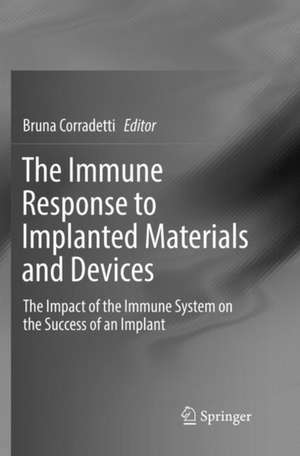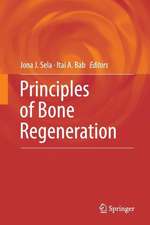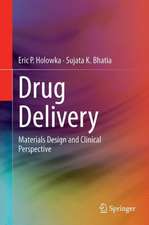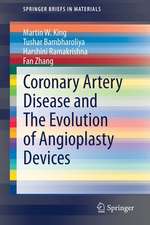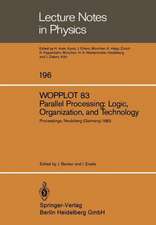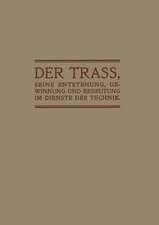The Immune Response to Implanted Materials and Devices: The Impact of the Immune System on the Success of an Implant
Editat de Bruna Corradettien Limba Engleză Paperback – 10 iul 2018
| Toate formatele și edițiile | Preț | Express |
|---|---|---|
| Paperback (1) | 942.76 lei 6-8 săpt. | |
| Springer International Publishing – 10 iul 2018 | 942.76 lei 6-8 săpt. | |
| Hardback (1) | 948.79 lei 6-8 săpt. | |
| Springer International Publishing – 15 dec 2016 | 948.79 lei 6-8 săpt. |
Preț: 942.76 lei
Preț vechi: 1149.71 lei
-18% Nou
Puncte Express: 1414
Preț estimativ în valută:
180.39€ • 188.35$ • 149.30£
180.39€ • 188.35$ • 149.30£
Carte tipărită la comandă
Livrare economică 05-19 aprilie
Preluare comenzi: 021 569.72.76
Specificații
ISBN-13: 9783319832937
ISBN-10: 331983293X
Ilustrații: XVIII, 241 p. 25 illus., 20 illus. in color.
Dimensiuni: 155 x 235 mm
Greutate: 0.37 kg
Ediția:Softcover reprint of the original 1st ed. 2017
Editura: Springer International Publishing
Colecția Springer
Locul publicării:Cham, Switzerland
ISBN-10: 331983293X
Ilustrații: XVIII, 241 p. 25 illus., 20 illus. in color.
Dimensiuni: 155 x 235 mm
Greutate: 0.37 kg
Ediția:Softcover reprint of the original 1st ed. 2017
Editura: Springer International Publishing
Colecția Springer
Locul publicării:Cham, Switzerland
Cuprins
Host response to implanted materials and devices - overview.- Innate and acquired immunity: umoral and cellular components (Protein adsorption, cell recruitment, tissue response).- Acute/Chronic inflammation, foreign body reaction - implications.- Macrophages: from immune response to tissue restoration.- Host response to cell-grafted biomaterials.- Host response to therapeutic nanoparticles.- Host response to synthetic versus natural biomaterials (The effects of the composition, structure on function, stability, and final outcome).- Biomimicry at the cell-material interface to mitigate the immune reaction.- Bioactive materials design for immunomodulation - exploiting the patient’s own body machinery to achieve functional tissue restoration.- Host response to materials for orthopaedic applications: current approaches and future perspectives.- Methods to activate cellular immunity or determine immune evasion.
Textul de pe ultima copertă
This book provides a comprehensive overview of the cascade of events activated in the body following the implant of biomaterials and devices. It is one of the first books to shed light on the role of the host immune response on therapeutic efficacy of an implant, and reviews the state-of-the-art for both basic science and medical applications. The text examines advantages and disadvantages of the use of synthetic versus natural biomaterials. Particular emphasis is placed on the role of biomimicry in the development of smart strategies able to modulate infiltrating immune cells, thus reducing side effects (such as acute and chronic inflammation, fibrosis and/or implant rejection) and improving the therapeutic outcome (healing, tissue restoration). Current cutting-edge approaches in tissue engineering, regenerative medicine, and nanomedicine offer the latest insights into the role immunomodulation plays in improving tolerance during cells and tissue transplant, in the treatment of orthopaedic, pancreatic, and hepatic diseases.The Immune Response to Implanted Materials and Devices is intended for an audience of graduate students and professional researchers in both academia and industry interested in the development of smart strategies, which are able to exploit the self-healing properties of the body and achieve functional tissue restoration.
Caracteristici
Explores the detrimental and beneficial effects of immune cells' activation in response to implants
Highlights the possibilities of biomimicry in modulating immune reactions
Describes the latest approaches to the activation of cellular immunity
Discusses regulatory challenges, translational considerations and literature case studies pertinent to the immunological safety of nanotechnology-based devices
Highlights the possibilities of biomimicry in modulating immune reactions
Describes the latest approaches to the activation of cellular immunity
Discusses regulatory challenges, translational considerations and literature case studies pertinent to the immunological safety of nanotechnology-based devices
